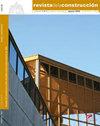单轴和双轴后张完全、有限和部分无粘结预应力混凝土板的静态和动态弯曲行为
IF 1.4
4区 工程技术
引用次数: 0
摘要
预应力构件在各种结构中越来越受到世界各地工程师的欢迎,因为预应力链具有更好的稳定性、适用性、经济性、美观性和结构效率。钢绞线的外形对混凝土的抗拉强度影响很大。钢绞线施加在混凝土上的力抵消了内部张力。建筑工程师的主要目标是在不牺牲敏捷性和成本效益的情况下构建一个优秀的强度结构。本研究的主要目标是对不同的预应力混凝土板进行数值模拟,以了解和预测无粘结混凝土股的单轴和双轴预应力在静力和动力行为中的向上挠度(弯曲)行为以及预应力混凝土构件的最大弯矩,并将先前的实验工作作为验证的基准。在线性和非线性裂缝分析中,特别强调了影响跨中向上挠度和内部弯矩的无粘结后张预应力板参数。本研究还调查了链型、链面积、链数、链偏心率、加载类型和水平的影响。从单轴和双轴两种预应力方向研究了全预应力和局部预应力。在这些参数下,得到了以构件固有频率为单位的数值动态特性。本研究采用有限元数值模型对线形和裂纹截面进行了分析,得出单轴、双轴单向和双向部分无界预应力混凝土板的上挠度(弯度)受束形、面积、束数和偏心距的影响;加载类型和加载值;以及静力和动力分析中的预应力水平。本文章由计算机程序翻译,如有差异,请以英文原文为准。
Static and dynamic camber behavior of uniaxial and biaxial post-tensioned fully, limited, and partially unbonded pre-stressed concrete slab
Pre-stressed members in various structures are gaining popularity among engineers in many parts of the world because pre-stressed strands offer better stability, serviceability, economy, aesthetics, and structural efficiency. The profile of the strand greatly influences the tensile strength of concrete. The force exerted by the strand on the concrete counterbalances internal tensile forces. A construction engineer’s principal goal is to build an excellent strength structure without sacrificing agility and cost-effectiveness. This study’s main objective is to model numerically different pre-stressed concrete slabs to understand and predict the upward deflection (camber) behavior of uniaxial and biaxial pre-stressing of unbonded concrete strands in the static and dynamic behavior and the maximum moments of pre-stressed concrete members by considering previous experimental work as a benchmark for validation. Particular emphasis was placed on the unbonded post-tensioned pre-stressed slab parameters that influence the mid-span upward deflections and internal moments in linear and nonlinear crack analysis. This study also investigated the effect of strand profiles, strand areas, number of strands, strand eccentricities, loading types, and level. It looked into full and partial pre-stressing with uniaxial and biaxial pre-stressing directions. The numerical dynamic characteristics in terms of members’ natural frequency with such parameters were found. This study used a finite element numerical model for the analysis of linear and cracked sections and concluded that the upward deflection (camber) of uniaxial and biaxial one-way and two-way partially unbounded pre-stressed concrete slabs is affected by the strand’s profile, area, and number and eccentricity; the loading type and value; and the pre-stressing level in static and dynamic analyses.
求助全文
通过发布文献求助,成功后即可免费获取论文全文。
去求助
来源期刊

Revista de la Construccion
工程技术-工程:土木
CiteScore
2.30
自引率
21.40%
发文量
0
期刊介绍:
The Journal of Construction is aimed at professionals, constructors, academics, researchers, companies, architects, engineers, and anyone who wishes to expand and update their knowledge about construction. We therefore invite all researchers, academics, and professionals to send their contributions for assessment and possible publication in this journal. The publications are free of publication charges.
OBJECTIVES
The objectives of the Journal of Construction are:
1. To disseminate new knowledge in all areas related to construction (Building, Civil Works, Materials, Business, Education, etc.).
2. To provide professionals in the area with material for discussion to refresh and update their knowledge.
3. To disseminate new applied technologies in construction nationally and internationally.
4. To provide national and foreign academics with an internationally endorsed medium in which to share their knowledge and debate the topics raised.
 求助内容:
求助内容: 应助结果提醒方式:
应助结果提醒方式:


